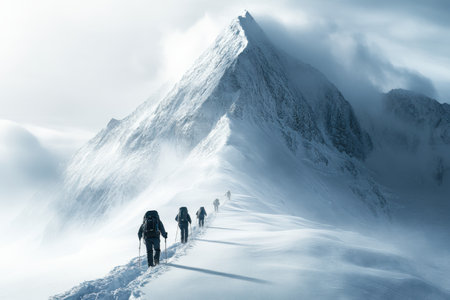1. Understanding Electrolytes and Their Role in the Body
When youre out hiking in hot weather, you might hear people talking about electrolytes. But what exactly are they, and why do they matter so much when youre on the trail?
What Are Electrolytes?
Electrolytes are minerals that carry an electric charge. The main electrolytes in your body include sodium, potassium, magnesium, calcium, and chloride. These minerals are found in your blood, sweat, and other body fluids.
Key Functions of Electrolytes
Electrolytes do a lot of important jobs to keep your body running smoothly. Here’s a quick look at what each one does:
| Electrolyte | Main Function | Sources |
|---|---|---|
| Sodium | Keeps fluid balance, helps muscles and nerves work | Table salt, sports drinks, salty snacks |
| Potassium | Muscle function, controls heartbeat | Bananas, potatoes, oranges |
| Magnesium | Muscle relaxation, energy production | Nuts, seeds, leafy greens |
| Calcium | Bone health, muscle contraction | Dairy products, fortified juices |
| Chloride | Fluid balance, works with sodium | Table salt, tomatoes, lettuce |
Why Are Electrolytes Essential During Hot Weather Hikes?
When you hike in the heat, your body sweats to cool down. Sweat contains both water and electrolytes—especially sodium. If you lose too many electrolytes and don’t replace them, you can start to feel weak or dizzy. In serious cases, it can even be dangerous.
The Importance of Staying Balanced
Your muscles need the right mix of electrolytes to contract and relax properly. Without enough electrolytes—particularly sodium and potassium—you could end up with muscle cramps or even heat exhaustion.
Everyday Example: Why Sports Drinks Matter on the Trail
This is why sports drinks and electrolyte tablets are so popular with American hikers during summer adventures. They help replace not just lost water but also those key minerals that keep your body functioning well when temperatures soar.
2. How Heat and Exercise Impact Electrolyte Balance
When you’re out hiking under the hot American sun, your body works overtime to keep you cool. The most obvious way it does this is through sweating. While sweating helps regulate your temperature, it also causes you to lose fluids and essential electrolytes—like sodium, potassium, magnesium, and calcium—that your body needs to function properly.
What Happens When You Sweat?
Sweat isn’t just water; it’s loaded with electrolytes and salts. As you hike in warm weather, especially on steep or challenging trails, your sweat rate increases. This means you’re losing more electrolytes at a faster pace.
| Electrolyte | Main Role | Common Symptoms of Depletion |
|---|---|---|
| Sodium | Maintains fluid balance, supports nerve function | Cramps, headache, confusion |
| Potassium | Supports muscle contractions and heart function | Muscle weakness, irregular heartbeat |
| Magnesium | Aids muscle relaxation, energy production | Muscle spasms, fatigue |
| Calcium | Essential for muscle movement and nerve messaging | Tingling, numbness, muscle cramps |
The Risks of Electrolyte Imbalance on the Trail
If you don’t replace the electrolytes lost through sweat, you can run into some serious issues. Hikers often experience muscle cramps and early-onset fatigue. In more severe cases, an electrolyte imbalance can lead to heat exhaustion or even heat stroke—both of which are medical emergencies common in U.S. outdoor settings during summer months.
Signs You Might Be Low on Electrolytes:
- Persistent muscle cramps that don’t go away with stretching or rest
- Unusual tiredness or feeling wiped out too soon on the trail
- Dizziness or lightheadedness when standing up or moving quickly
- Nausea or confusion, especially in the heat
- Headaches that get worse as the day goes on
Why It Matters for American Hikers:
The heat in many parts of the U.S.—from Arizona deserts to Appalachian summers—can sneak up on even experienced hikers. Staying aware of how sweating affects your electrolyte levels is key for safe and enjoyable adventures. Knowing what to watch for can help you take action before minor symptoms become major problems.
![]()
3. Spotting Signs of Electrolyte Imbalance on the Trail
Why Electrolyte Balance Matters
When you’re hiking under the summer sun, your body loses electrolytes and salt through sweat. Without enough replacement, you risk dehydration and an electrolyte imbalance—both of which can quickly turn a fun hike into a dangerous situation. Recognizing the warning signs in yourself and your hiking buddies is crucial for safety.
Common Symptoms to Watch For
| Symptom | What It Means | What To Do |
|---|---|---|
| Muscle cramps or spasms | Your body is low on salt (sodium) and potassium, which help muscles work properly. | Take a break, stretch, and eat a salty snack or electrolyte drink. |
| Headache or dizziness | You may be dehydrated or lacking key minerals like sodium and magnesium. | Sit down in the shade and slowly sip water with electrolytes. |
| Nausea or vomiting | This can signal moderate to severe dehydration or electrolyte loss. | Rest, cool off, and try small sips of an electrolyte solution. |
| Unusual fatigue or weakness | Your cells aren’t getting what they need to function well. | Eat, hydrate, and rest until you feel stronger before continuing. |
| Confusion or irritability | A sign that your brain isn’t getting enough fluids or salts. | If symptoms are severe, consider ending the hike and seeking help. |
| Dark yellow urine or no urge to pee | Your body is holding onto water due to dehydration. | Drink more fluids; clear urine is usually a good sign you’re hydrated. |
Quick Tips for Monitoring Yourself & Others
- Check in regularly: Ask your group how everyone feels during rest stops—don’t ignore complaints about cramps or headaches.
- Pace yourself: Slow down if anyone starts showing signs of heat stress or dehydration.
- Use the buddy system: Keep an eye on each other—sometimes people don’t notice their own symptoms right away.
- Snack smart: Carry salty snacks like trail mix, pretzels, or electrolyte chews for quick fixes on the go.
- Hydrate often: Sip water throughout your hike instead of waiting until you’re thirsty.
4. Best Ways to Replenish Electrolytes While Hiking
Popular Hydration Options in the U.S.
When hiking in hot weather, keeping your electrolyte levels balanced is just as important as drinking enough water. Americans often use a mix of sports drinks, electrolyte tablets, and salty snacks on the trail. Each option has its own set of advantages and things to watch out for. Here’s a quick look at what hikers commonly use:
| Option | Pros | Cons |
|---|---|---|
| Sports Drinks (like Gatorade or Powerade) | – Convenient and easy to find – Contains sodium, potassium, and carbs for energy – Quick absorption |
– Can be high in sugar – Bulky bottles add weight – May not replace all essential minerals |
| Electrolyte Tablets or Powders (Nuun, Liquid I.V., etc.) | – Lightweight and portable – Sugar-free or low-sugar options available – Can customize dose by adding to water |
– Taste can vary – Need access to clean water – Some formulas may cause upset stomachs for sensitive people |
| Salty Snacks (trail mix, salted nuts, pretzels) | – Easy to pack and eat on the go – Provides both salt and calories – Helps satisfy hunger during long hikes |
– Might not provide other key electrolytes like potassium or magnesium – Can make you thirsty if you don’t have enough water |
How to Choose What’s Best for You?
The right choice depends on your personal taste, dietary needs, and how long your hike will be. Many experienced hikers in the U.S. combine these methods: drinking water mixed with electrolyte tablets and snacking on something salty every hour or two. If you sweat heavily or are hiking for several hours, pay extra attention to replacing both fluids and salts.
Tips for American Hikers
- Bring more than one kind of electrolyte replacement so you don’t get bored of the flavor.
- Watch out for “healthy” drinks that don’t actually contain enough sodium or potassium.
- If you’re hiking in remote areas, powders and tablets are easier to carry than heavy bottles.
- Always pack extra water—electrolyte products work best when you’re well-hydrated!
5. Practical Tips for Staying Balanced in the Heat
Plan Ahead: Know Your Route and Weather
Before you hit the trail, check the local forecast and research your hiking route. If extreme heat is expected, consider hiking early in the morning or later in the evening when temperatures are cooler. Let someone know your plans and always have a backup plan in case conditions become unsafe.
Pack Smart: Essentials for Hot Weather Hikes
Packing the right gear can make all the difference on a hot day. Here’s what you should bring to help maintain your electrolyte and fluid balance:
| Item | Purpose |
|---|---|
| Electrolyte tablets/powder (e.g., Nuun, Liquid I.V.) | Quickly replenish lost sodium, potassium, and magnesium |
| Water bottles/hydration reservoir | Stay consistently hydrated; aim for at least 0.5-1 liter per hour of hiking |
| Salty snacks (trail mix, pretzels, jerky) | Provide sodium and energy to help prevent cramps |
| Lightweight, moisture-wicking clothing | Keeps you cool and helps sweat evaporate |
| Sunscreen & wide-brim hat | Protects from sunburn, reducing dehydration risk |
Pace Yourself: Listen to Your Body
Take regular breaks in the shade to cool down and drink fluids even before you feel thirsty. Watch for signs of heat exhaustion—such as dizziness, headache, nausea, or muscle cramps—and slow your pace if needed. Hiking with a buddy is always safer so you can look out for each other.
Hydration & Electrolyte Intake Guide
| Condition | Suggested Fluid Intake | Electrolyte Recommendation |
|---|---|---|
| Mild Activity/Short Hike (<2 hours) | 0.5-1 liter/hour water | Add electrolytes if sweating heavily or its very hot |
| Moderate/Long Hike (>2 hours) | 1 liter/hour water + sports drink or tablet every 1-2 hours | Include salty snacks or electrolyte chews regularly |
| High Heat/Strenuous Activity | Up to 1.5 liters/hour (sip frequently) | Bump up salt intake; use commercial electrolyte products as directed on label |
Troubleshooting: Common Issues & Quick Fixes
- If you start feeling sluggish or get muscle cramps, stop and eat something salty with water.
- If water tastes bland or youre not hungry, try an electrolyte drink to restore balance and appetite.
- If you notice dark urine or stop sweating, take immediate steps to cool down and hydrate—find shade and rest until you feel better.
Remember: Prevention Beats Treatment!
The best way to stay balanced during hot weather hikes is by being proactive—plan ahead, pack right, monitor your body, and never underestimate the power of electrolytes and a salty snack.


